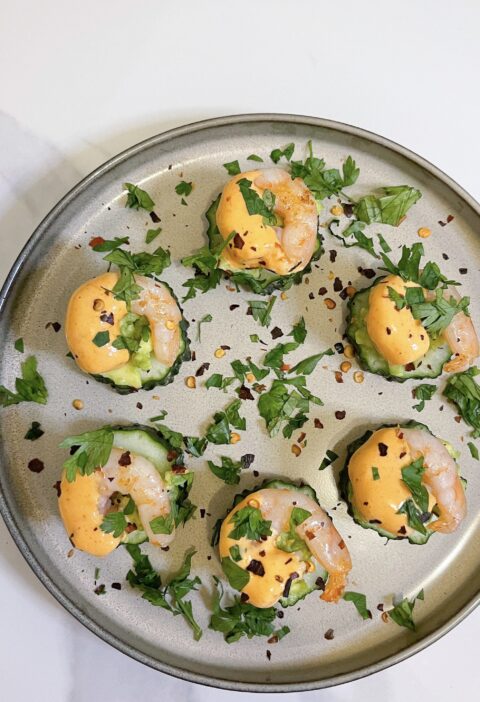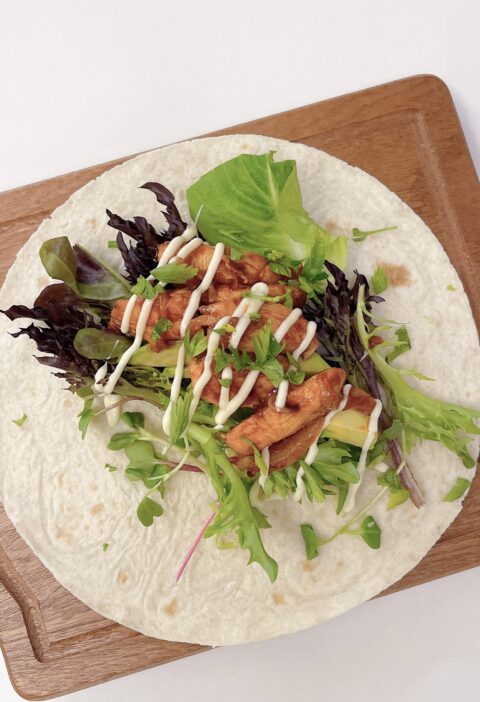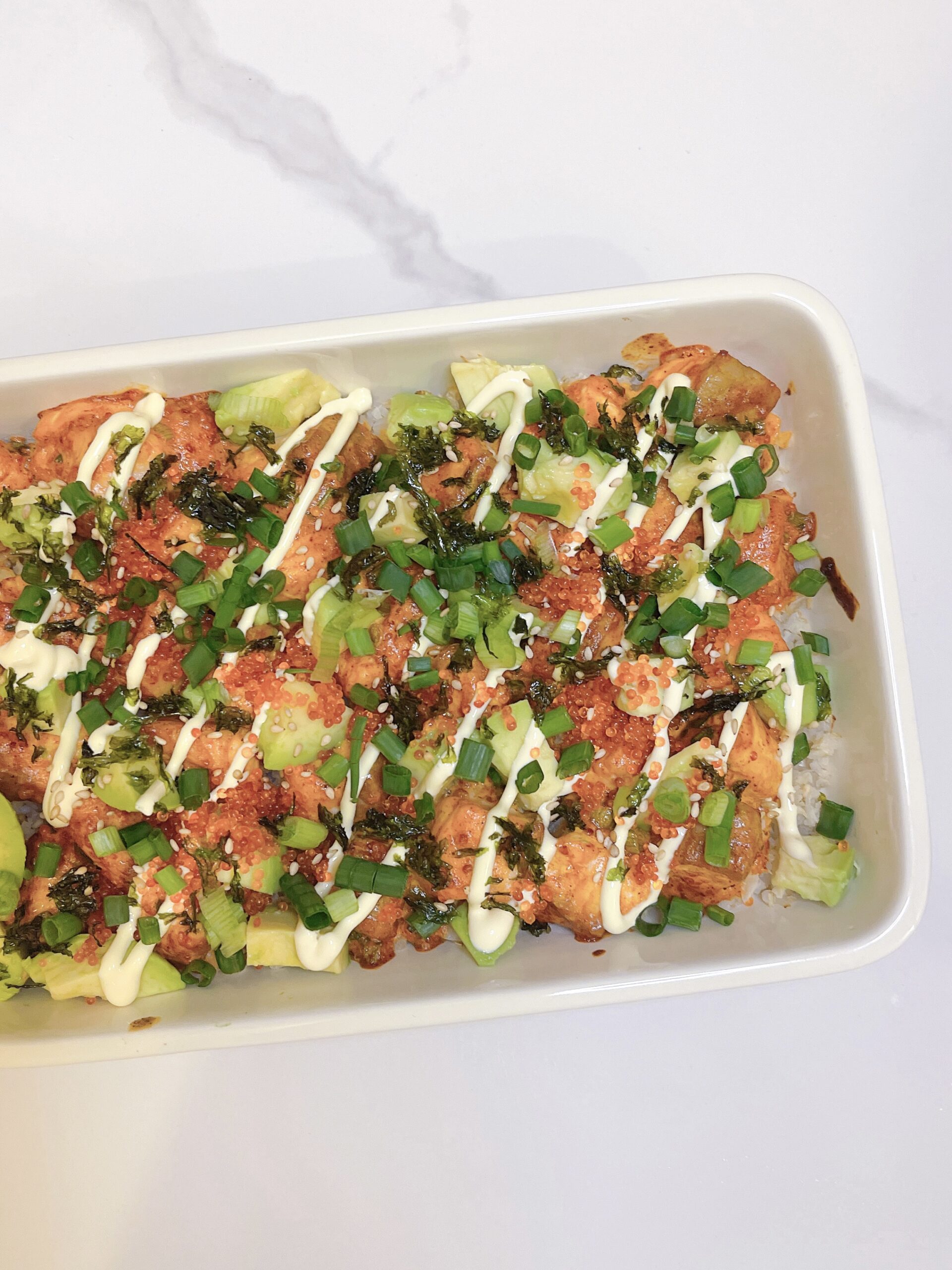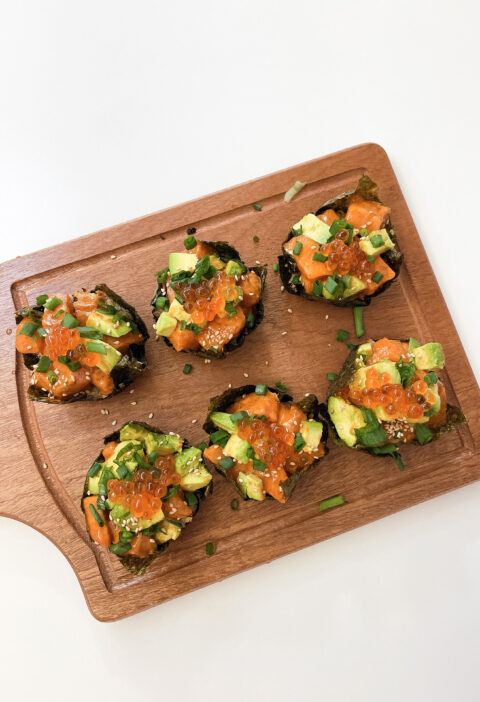What is Korean Beef Lettuce Wraps?
Korean Beef Lettuce Wraps, also known as Bulgogi Lettuce Wraps, are a culinary masterpiece that originates from South Korea. These wraps are a perfect embodiment of the Korean approach to food, which emphasizes balance and harmony in flavors and textures. At its core, Korean Beef Lettuce Wraps feature thin slices of beef marinated in a rich and savory blend of soy sauce, sugar, garlic, and sesame oil. The marinated beef is then quickly cooked, typically grilled or pan-fried, until it’s tender and infused with all the wonderful flavors of the marinade.
But what truly sets these wraps apart is the unique way they are enjoyed. Rather than relying on traditional bread or tortillas, Korean Beef Lettuce Wraps use crisp, fresh lettuce leaves as the vessel for the succulent beef. The contrast of the warm, flavorful beef against the cool, crisp lettuce creates a delightful contrast of temperatures and textures. It’s a culinary adventure that engages all your senses, from the vibrant colors to the tantalizing aroma and, of course, the unforgettable taste.
Korean Beef Lettuce Wraps have gained immense popularity beyond South Korea’s borders, and for a good reason. They offer a balanced blend of umami, sweetness, and a touch of smokiness from the cooking process. The lettuce leaves, usually green leaf or butter lettuce, add a refreshing and slightly earthy note that complements the richness of the beef. This balance is at the heart of Korean cuisine and what makes these wraps so universally appealing.
What is Bulgogi?
To truly appreciate Korean Beef Lettuce Wraps, we must delve into the star of the show: Bulgogi. The word “Bulgogi” itself is a delightful hint at its preparation; it means “fire meat” in Korean. Traditionally, Bulgogi is prepared by marinating thinly sliced beef in a mixture of soy sauce, sugar, minced garlic, and sesame oil. This marinade imparts a unique blend of flavors to the meat, creating a deliciously sweet and savory profile.
The beef used for Bulgogi is typically a tender cut, like ribeye or sirloin, as it’s important that the meat remains tender and juicy after cooking. The thinly sliced beef is marinated for a period, often a few hours to overnight, allowing the flavors to penetrate the meat deeply. This marinating process is crucial in achieving that signature taste that Bulgogi is famous for.
Bulgogi can be cooked in various ways, with grilling and pan-frying being the most common methods. The traditional method involves cooking it over an open flame, which imparts a subtle smokiness to the meat, adding yet another layer of complexity to the flavor profile.
What’s intriguing about Bulgogi is its versatility. While it’s most commonly associated with beef, the Bulgogi marinade can also be used for other proteins, like chicken or pork, as well as for meat alternatives like tofu. This adaptability showcases the brilliance of Korean cuisine, where a single, exquisite flavor profile can be applied to a range of ingredients.
Are Korean Beef Lettuce Wraps Healthy?
Korean Beef Lettuce Wraps can indeed be a healthy dining choice when approached mindfully. Let’s break down the components to see how they contribute to a balanced meal.
First, the beef in these wraps provides a significant source of high-quality protein. Protein is essential for muscle growth, tissue repair, and overall bodily function. The leaner the cut of beef you choose, the lower the fat content, making it a heart-healthy protein source.
The use of lettuce leaves as the wrap instead of traditional bread or tortillas offers a significant health benefit. Lettuce is low in calories and carbohydrates while providing essential vitamins and minerals. It’s also a great source of dietary fiber, which aids in digestion and helps you feel full, contributing to weight management.
However, the Bulgogi marinade can be a bit of a double-edged sword when it comes to health. While it adds immense flavor to the beef, it can also contain sugar and sodium, which, when used excessively, can lead to less healthy outcomes. Nonetheless, there are ways to mitigate this. Using reduced-sodium soy sauce and less sugar in the marinade can help make Korean Beef Lettuce Wraps a healthier option.
To boost the overall nutritional profile, consider adding a variety of fresh, colorful vegetables as toppings, such as thinly sliced carrots, cucumber, and scallions. These veggies provide an array of vitamins and minerals, adding to the meal’s healthfulness.
In addition to being a good source of protein and fiber, Korean Beef Lettuce Wraps offer other health benefits worth considering. Here are some important factors to take into account:
- Nutrient-Rich Ingredients: Beyond the beef and lettuce, many components of these wraps contribute to their nutritional value. Garlic, for example, is not only a flavor enhancer but also has potential health benefits, such as supporting the immune system and having antioxidant properties. Sesame oil, another common ingredient in the Bulgogi marinade, is rich in heart-healthy monounsaturated fats and contains antioxidants.
- Portion Control: Korean Beef Lettuce Wraps are often served family-style, allowing individuals to assemble their wraps according to their preferences. This encourages portion control, as diners can decide how much meat and other ingredients to include. It’s a practice that can help maintain a balanced calorie intake.
- Low-Calorie Option: Lettuce leaves, which serve as the “wraps,” are a low-calorie alternative to traditional bread or tortillas. This means you can indulge in the delicious flavors of Korean Beef Lettuce Wraps without consuming excess calories.
- Gluten-Free and Low-Carb: For those with dietary restrictions, Korean Beef Lettuce Wraps offer a gluten-free and low-carb alternative to traditional sandwiches or wraps. This makes them an excellent choice for individuals following gluten-free or low-carb diets.
- Customization: The beauty of Korean Beef Lettuce Wraps lies in their flexibility. Diners can customize their wraps to suit their dietary preferences. For example, if you’re following a low-carb diet, you can use less sugar in the Bulgogi marinade or opt for a sugar substitute. If you’re vegetarian, you can explore meat alternatives like tofu or tempeh marinated in Bulgogi sauce.
- Balance and Moderation: As with any cuisine, it’s important to practice balance and moderation. While Korean Beef Lettuce Wraps can be part of a healthy diet, it’s essential to enjoy them as part of a balanced meal plan. Incorporating a variety of foods in your diet is key to ensuring you receive all the necessary nutrients.
In conclusion, when prepared thoughtfully, Korean Beef Lettuce Wraps can be a healthy and balanced dining choice. They offer protein, fiber, and an array of nutrients, and by being mindful of ingredients and portion control, you can savor the delicious flavors without compromising your health-conscious goals. These wraps provide a delightful combination of taste and nutrition, making them a satisfying addition to your culinary repertoire.
What Are the Ingredients to Make Korean Beef Lettuce Wraps?
To create Korean Beef Lettuce Wraps, you’ll require the following key ingredients:
- Thinly sliced beef (commonly ribeye or sirloin): Tender cuts of beef are essential to ensure the meat remains juicy and succulent after cooking.
- Bulgogi marinade: This marinade imparts the signature flavor to the beef. It consists of:
- Soy sauce: Provides saltiness.
- Sugar: Adds sweetness.
- Minced garlic: Enhances the savory aspect.
- Sesame oil: Contributes a touch of nuttiness.
- Lettuce leaves (green leaf or butter lettuce): These fresh and crisp leaves serve as the wraps, providing a contrast to the savory meat.
- Additional toppings and accompaniments can vary but often include:
- Thinly sliced carrots
- Cucumber
- Scallions
- Kimchi (for a spicy kick)
These ingredients come together to create a delightful blend of flavors and textures in Korean Beef Lettuce Wraps, offering a balance of savory, sweet, and a hint of smokiness.
How to Make Korean Beef Lettuce Wraps
Crafting your own Korean Beef Lettuce Wraps is a straightforward yet incredibly rewarding process. Here’s a step-by-step guide to creating this delicious dish:
- Start by preparing the Bulgogi marinade. In a bowl, combine soy sauce, sugar, minced garlic, and sesame oil. Adjust the quantities to suit your taste, keeping in mind that the sugar adds sweetness, while the soy sauce provides saltiness.
- Take the thinly sliced beef and place it in a resealable bag or a shallow dish. Pour the marinade over the beef, ensuring all slices are well coated. Marinate for at least 30 minutes, but for the best results, marinate the beef overnight in the refrigerator. This allows the flavors to penetrate the meat deeply.
- Once the beef is marinated, you can cook it. Options include grilling, pan-frying, or broiling. The traditional method involves grilling the meat over an open flame, which imparts a subtle smokiness. Pan-frying is a convenient alternative, allowing you to cook the meat quickly in a hot skillet.
- As the beef cooks, assemble your wraps. Take a lettuce leaf and place a few slices of the cooked beef inside. Add your choice of toppings, such as thinly sliced carrots, cucumber, and scallions.
- Roll up the lettuce leaf, creating a neat package, and enjoy the burst of flavors with each bite.
How to Make Spicy Korean Beef Lettuce Wraps
For those who enjoy a little heat in their dishes, you can easily transform your Korean Beef Lettuce Wraps into Spicy Korean Beef Lettuce Wraps. The key ingredient here is Gochujang, a Korean red chili paste.
Gochujang adds a delightful kick to the dish, taking it to a new level of flavor complexity. To create Spicy Korean Beef Lettuce Wraps, simply add Gochujang to your Bulgogi marinade, adjusting the quantity to your desired level of spiciness.
Mix the Gochujang with the other marinade ingredients and proceed with the marinating and cooking process as usual. The result is a mouthwatering fusion of sweet, savory, and spicy that’s sure to awaken your taste buds.
What is Gochujang?
Gochujang is a quintessential ingredient in Korean cuisine, and its role in the kitchen is much more than just adding spiciness. This fermented chili paste is made from red chili peppers, glutinous rice, fermented soybeans, and salt. Its rich, complex flavor profile includes a balance of heat, sweetness, and umami.
Gochujang is used in a wide range of Korean dishes, from marinades and sauces to stews and soups. It’s a fundamental component in dishes like Bibimbap, Tteokbokki, and, of course, Bulgogi, transforming them into flavorful and distinctive Korean creations.
The fermentation process contributes to the depth of Gochujang’s flavor and also produces beneficial probiotics that can aid in digestion. Its chili content can also stimulate metabolism and boost the body’s ability to burn calories. When used in moderation, Gochujang can add a layer of complexity and heat to your favorite Korean dishes, including Korean Beef Lettuce Wraps.
What Is the Best Way to Serve Korean Beef Lettuce Wraps?
Korean Beef Lettuce Wraps are typically served in a communal style, allowing everyone at the table to participate in creating their wraps according to their preferences. This communal approach enhances the dining experience, encouraging interaction and sharing with family and friends.
The best way to serve Korean Beef Lettuce Wraps is to arrange all the components attractively on the table. Start with a platter of lettuce leaves, followed by a dish of the cooked Bulgogi beef. Offer a variety of toppings and accompaniments, which can include thinly sliced carrots, cucumber, scallions, and kimchi. Finally, provide a bowl of cooked rice as an optional addition.
To assemble a wrap, diners can take a lettuce leaf, add a spoonful of Bulgogi beef, top it with their choice of vegetables and kimchi, and, if desired, a small serving of rice. Roll the lettuce leaf into a neat package and enjoy. The beauty of this approach is that it allows everyone to customize their wraps to their liking, whether they prefer it mild or spicy, with or without rice.
Can I Reheat Korean Beef Lettuce Wraps?
Leftovers are a common occurrence when making Korean Beef Lettuce Wraps, and the good news is that you can indeed reheat them. However, to maintain the integrity of the lettuce and the flavor of the beef, it’s essential to do so with care.
To reheat, follow these steps:
- Separate the cooked beef from the lettuce leaves and any other toppings.
- Heat the beef gently in a skillet or microwave. Be cautious not to overcook it, as this can make the beef tough.
- Reheat the lettuce leaves briefly to maintain their crispness. You can do this by lightly steaming them or using a quick microwave zap.
- Once both components are warm, assemble your wraps, adding fresh toppings as desired.
By reheating the components separately and assembling the wraps just before serving, you can enjoy the same delightful textures and flavors as when you initially prepared them.
In conclusion, Korean Beef Lettuce Wraps offer a diverse array of flavors and textures, making them a culinary adventure worth experiencing. Whether you choose the classic version or opt for a spicy twist with Gochujang, these wraps provide a delightful contrast of sweet, savory, and occasionally spicy, all wrapped in fresh, crisp lettuce leaves. They are perfect for communal dining, allowing everyone to create their customized wraps, and you can even reheat them for a delicious leftover meal. It’s a dish that captures the essence of Korean cuisine and invites you to savor its wonderful complexities.
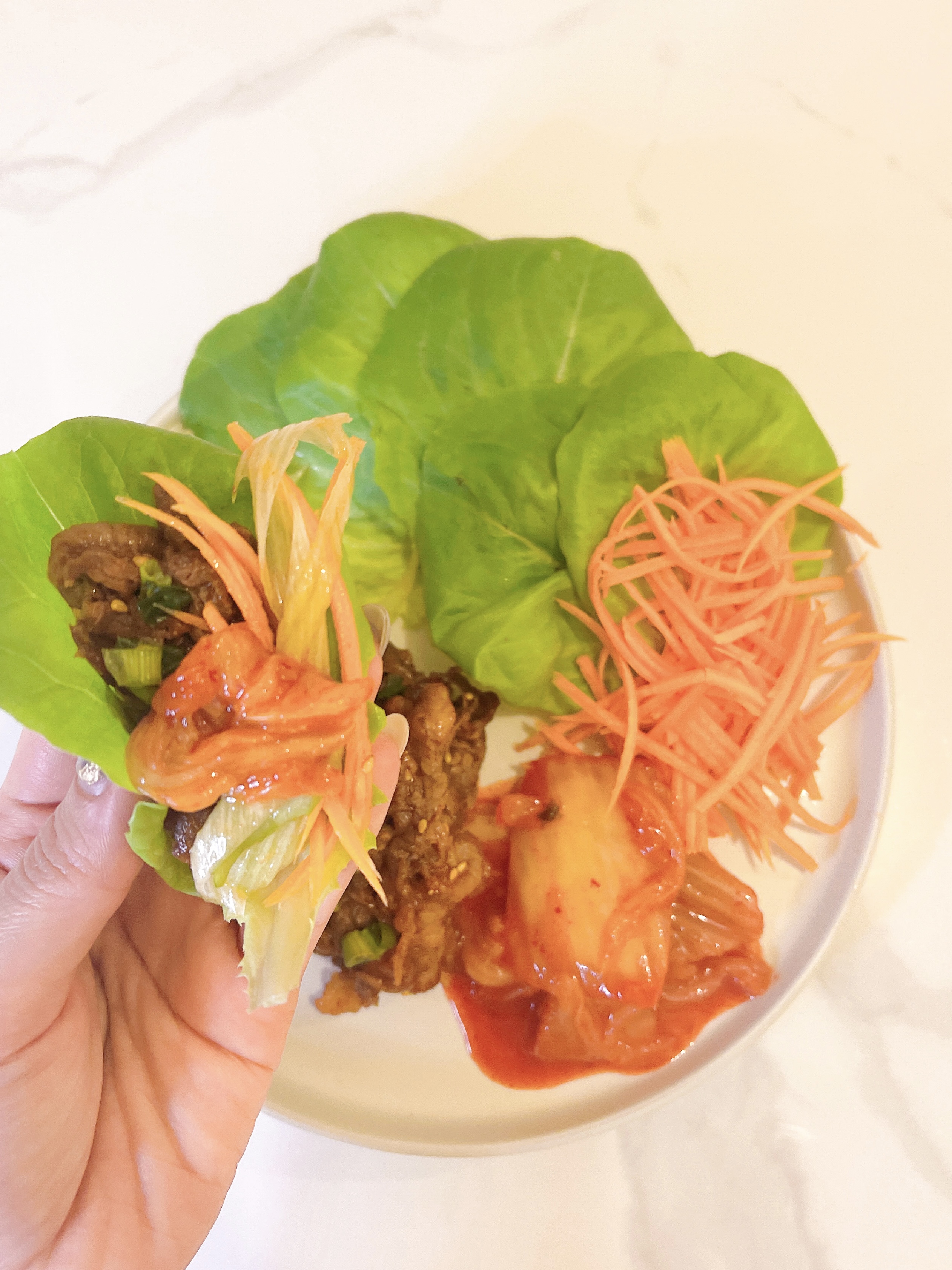
Korean Beef Lettuce Wraps (Bulgogi Lettuce Wraps)
Description
Embark on an exciting culinary journey through the flavorful world of Korean cuisine with the irresistible Korean Beef Lettuce Wraps, also known as Bulgogi Lettuce Wraps. These tantalizing wraps, with their exquisite blend of flavors and textures, celebrate the art of balance, where succulent marinated beef harmonizes with crisp, fresh lettuce leaves. The sweet, savory, and subtly smoky notes of these wraps capture the essence of Korean cuisine, making them a must-try for both connoisseurs and newcomers alike.
Ingredients
For Bulgogi Marinade:
For the Wraps:
Instructions
- Prepare the Marinade:
In a bowl, combine the soy sauce, sugar, minced garlic, sesame oil, Gochujang and grated ginger if you’re using it. Stir well to dissolve the sugar. You can adjust the sugar quantity to match your preferred level of sweetness. - Marinate the Beef:
Place the thinly sliced beef in a resealable bag or a shallow dish.
Pour the Bulgogi marinade over the beef, ensuring all slices are well coated. Seal the bag or cover the dish and marinate in the refrigerator for at least 30 minutes. For the best results, marinate the beef overnight to allow the flavors to penetrate the meat deeply. - Cook the Beef:
Heat a grill, grill pan, or skillet over medium-high heat.
Remove the beef from the marinade, allowing any excess marinade to drip off.
Grill or pan-fry the beef for 2-3 minutes on each side until it’s cooked to your preferred level of doneness. Be cautious not to overcook to maintain the meat’s tenderness. - Assemble the Wraps:
While the beef is cooking, prepare your lettuce leaves. Wash and dry them, and arrange them on a platter.
Place the cooked Bulgogi beef on a separate serving platter.
Offer a variety of toppings like thinly sliced carrots, sliced scallions, and kimchi. Place these alongside the lettuce leaves. - Serving:
To create a wrap, take a lettuce leaf, add a few slices of the cooked beef, and top it with your choice of vegetables and kimchi. You can also include a small serving of steamed rice for extra substance.
Roll up the lettuce leaf, creating a neat package, and secure it with a toothpick if necessary. - Enjoy:
Dive into the delightful combination of flavors and textures by savoring your Korean Beef Lettuce Wraps. Whether you prefer them mild or spicy, with or without rice, this communal dining experience allows everyone to customize their wraps to their liking.
Notes
- This recipe yields a flavorful, balanced, and healthy meal that captures the essence of Korean cuisine. It’s perfect for sharing with friends and family, offering a delightful taste of Korea’s culinary traditions.


